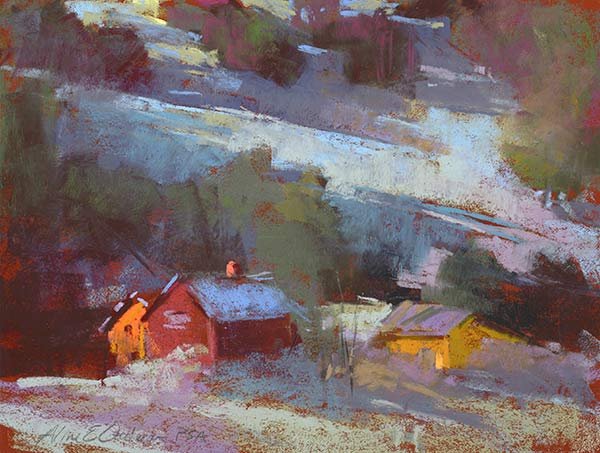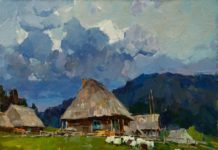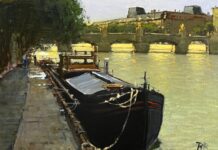“I’m never going to paint a house with the right number of windows,” says Aline Ordman, one of the featured instructors at the Plein Air Convention & Expo (PACE), slated for April in Tucson, Arizona. What does she mean?
“What we are seeing is the impression of the house,” says Ordman. “When we look at something and then look away, our impression of it is not how many windows there are. Perhaps we see it without the tree that is beside it — you don’t see everything when you look at something. I explain to my students, when they paint the distant mountains too dark, ‘Look at the foreground. See how when you are looking there, the mountains don’t seem quite so dark?’ Similarly, if you look at a lamp, you don’t necessarily see the sofa next to it.”
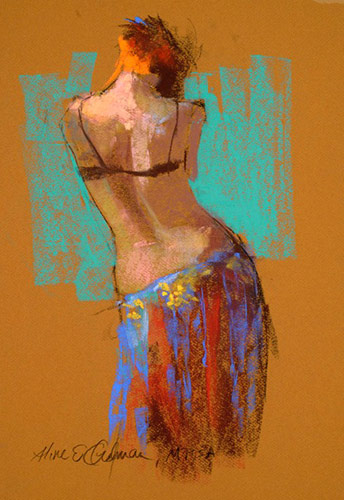
“Belly Dancer,” by Aline Ordman, 2013, pastel, 12 x 16 in. Done from life
Ordman will be offering a demo on the Pastel Stage at PACE, and she’ll likely work from a photograph. Undoubtedly a major point she will explore in her demo and in her discussion during the painting session is seeing things abstractly. “I paint what I see, as opposed to what’s in my head,” says the Vermont artist, who is equally adept in pastels and oils. “If you are painting a glass of water that has flowers in it, break it down into dark shapes, light shapes, cool shapes, warm shapes. If you walk back from it, it starts to become that object. If you see the glass as a glass, the next thing you are doing is outlining it. You have an idea in your head about what a flower looks like, and if you have in your head that it’s a flower when you are painting, then you start to paint the object instead of a collection of shapes.”
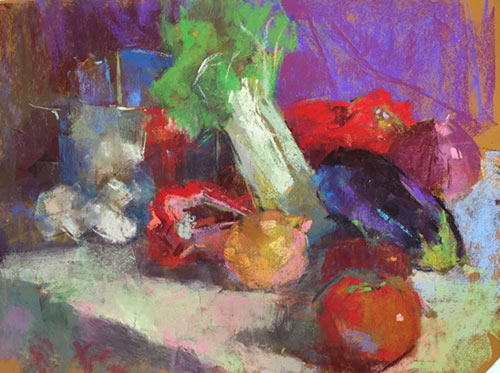
“Still Life Demo,” by Aline Ordman, 2015, pastel, 12 x 16 in.
Adhering to the abstract nature of the scene produces some advantages, such as ensuring the underlying design starts strong and stays strong during the painting process. But it does have its small pitfalls. “Often when I am working on things close up, I’m not sure if it is working until I step back from it,” says Ordman. “In the horse race piece, the subject is the movement and the color, not the individual horse and bridle and eye. The painting can look like crap well beyond 75 percent done, and for the first stages, I’m the only one who knows where everything is. It looks like mush to someone watching me paint it. Often it is the last five minutes that make it come together. A few details show what the subject is. Now, with a simpler piece you can stop many more places along the way. The busier the subject, the further along you have to get before it looks like something.”
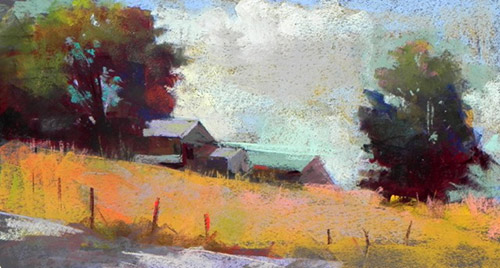
“Looking Up,” by Aline Ordman, 2014, pastel, 10 x 16 in.
Ordman uses Terry Ludwig pastels, which are known for being very soft and creamy. “I love their size, the way they cup in my hand,” she says. “I like the way they overlay on top of each other and don’t crumble.” She often works on dark toned paper, and she is a believer in graying down colors so selected spots of intense or light color stand out. And though she says she approaches oil paints and pastels in a very similar manner, when asked to describe her process with pastels, she uses a sculpting term: “I add and subtract, carving into shapes.”
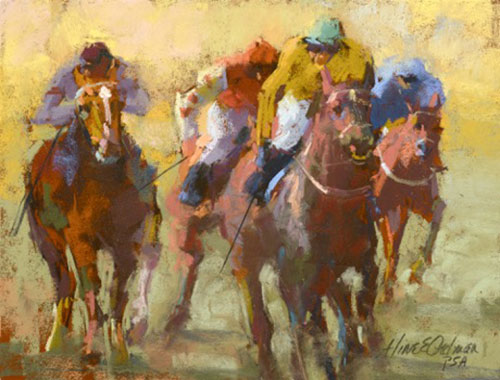
“On the Run,” by Aline Ordman, 2015, pastel, 9 x 12 in.
The soft, highly pigmented pastels allow her to do that. And because she likes to have a bit of an abstract feel in her work, the degree of completion for Ordman’s pieces is a real issue. “I tell my students that everybody works differently, but I work from a real general beginning and think of it as just shapes, and work first with design of large shapes. With each layer you can become more detailed, and how far you go with that is really your choice. We look at the world in terms of shapes and values and colors, and for me that is the first way to approach any painting. That’s why the stop is so important. Stop where you are comfortable, at the level of detail that you want.”
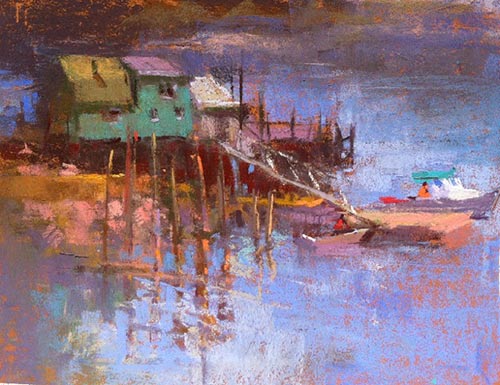
“Swans Island Wharf,” by Aline Ordman, 2015, pastel, 9 x 12 in.
To find out more about the Plein Air Convention & Expo (PACE) and to register for the April event, go here.

